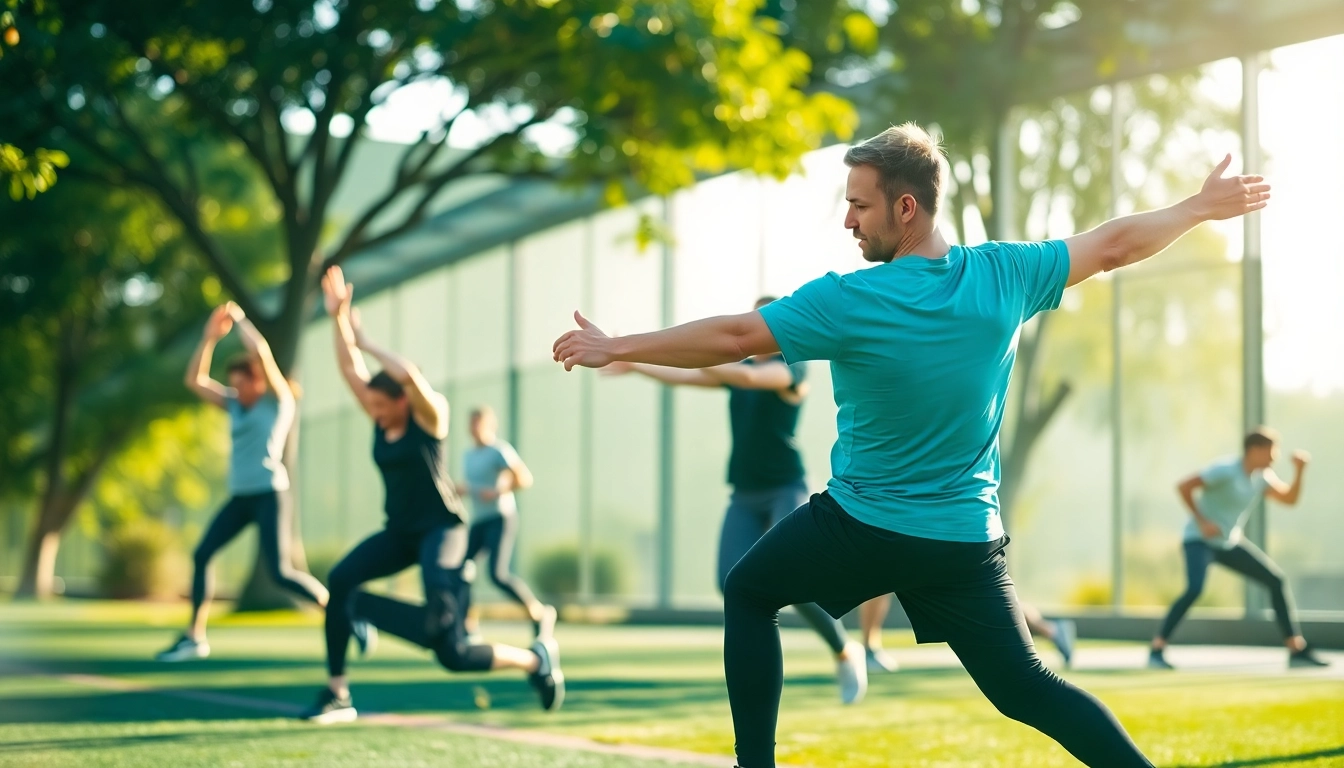Understanding Mobility Training
What is Mobility Training?
Mobility training is a specialized form of exercise that focuses on increasing the range of motion, stability, and control within joints and surrounding muscles. It differs from traditional stretching as it emphasizes dynamic movements that improve flexibility and strength simultaneously. According to experts, mobility training is essential not only for athletes but for anyone looking to enhance their physical performance and overall health. By engaging in mobility training, individuals can develop their ability to control their bodies throughout their entire range of motion, enhancing functional movements required in daily life and various sports.
Key Benefits of Mobility Training
Mobility training offers numerous benefits, including:
- Increased Range of Motion: Enhanced flexibility allows for a better and more efficient movement pattern, reducing the risk of injuries.
- Improved Performance: Athletes can execute sports-specific movements with greater ease, potentially improving their performance metrics.
- Enhanced Joint Health: Regular mobility exercises can help prevent stiffness and degenerative joint diseases by maintaining adequate joint movement.
- Injury Prevention: By improving strength and flexibility, mobility training aids in the prevention of injuries, especially in high-impact sports.
- Better Posture: Mobility training can correct muscle imbalances that lead to poor posture, helping to avoid back and musculoskeletal pain.
Common Misconceptions
Despite its benefits, mobility training is often misunderstood. Here are some common misconceptions:
- Mobility Training is the Same as Stretching: While both aim to improve flexibility, mobility training incorporates movement to achieve dynamic stabilization compared to the static nature of stretching.
- Only Athletes Need Mobility Training: Mobility work is beneficial for everyone, regardless of their activity level, enhancing day-to-day functional movements.
- It’s Only for the Young: Older adults can also reap significant benefits from mobility work, as it can alleviate stiffness associated with aging.
- Mobility is Short-Term: Mobility benefits accumulate with consistent training, leading to long-term improvements in movement quality.
Effective Mobility Training Techniques
Dynamic Stretching vs. Static Stretching
Understanding the difference between dynamic and static stretching is crucial for effective mobility training. Dynamic stretching involves controlled movements that improve flexibility and increase the range of motion while engaging muscles. This type of stretching is often performed before workouts to prepare the body for exertion. Examples include leg swings, torso twists, and walking lunges.
In contrast, static stretching involves lengthening a muscle to its farthest point and holding that position. This method is typically used after workouts to help cool down and maintain flexibility. Both techniques are important but should be applied appropriately within a mobility training regimen to maximize benefits.
Incorporating Mobility Drills
To make the most of mobility training, consider integrating various mobility drills tailored to your needs. Some effective drills include:
- Hip Openers: Movements like the 90/90 stretch promote hip mobility.
- Thoracic Spine Rotations: This is crucial for maintaining upper body mobility, improving shoulder function and posture.
- Ankle Mobilizations: Help increase ankle mobility, which is essential for squatting and other lower body movements.
- Cat-Cow Stretch: Engages both the spine and core, promoting flexibility and stability.
Exercises to Improve Joint Range of Motion
Consider incorporating the following exercises into your mobility training routine to enhance joint range of motion:
- Cossack Squats: A lateral squat variation that increases hip flexibility and strength.
- Deep Lunges with Torso Twist: Promotes hip, leg, and spine mobility simultaneously.
- Shoulder Dislocations: Using a band or stick allows for improved shoulder range of motion.
- Passive Hang: Letting your body hang from a bar can enhance shoulder and grip mobility.
Creating a Mobility Training Routine
How to Assess Your Mobility Needs
Before starting a mobility program, assessing your current level of mobility is crucial. This can be done through a series of tests that check various movements important for your lifestyle and activities. Common assessment movements include:
- Overhead Squat: Checks squat depth and hip, knee, and ankle mobility.
- Single Leg Balance: Tests dynamic stability and balance.
- Hip Flexor Test: Determines tightness in the hip flexors that may impede movement.
Based on your assessments, create a list of areas needing improvement and tailor your routine around those insights.
Structuring Your Weekly Mobility Schedule
Your mobility training routine should be structured and consistent. Consider dedicating specific days of the week solely for mobility where you engage in various drills targeting different body parts. A sample schedule might include:
- Monday: Lower body mobility (hip openers and ankle mobilizations)
- Wednesday: Upper body mobility (shoulder dislocations and thoracic spine rotations)
- Friday: Full body routine incorporating mobility drills for total flexibility
Be sure to include time for recovery, allowing your muscles and joints to adapt and strengthen.
Combining Mobility Training with Other Workouts
To reap the maximum benefits from mobility training, it should be integrated into your overall workout regimen. This can be done in several ways:
- Warm-Up: Begin workouts with mobility exercises to increase blood flow and prepare your body for action.
- Active Rest: During workouts, use mobility routines as rest periods to maintain heart rate while promoting recovery.
- Cool Down: Finish workouts with static stretching and mobility drills to enhance flexibility and promote recovery.
Advanced Mobility Training Practices
Integrating Mobility with Weight Training
Mobility training can significantly enhance weight training performance. Engaging in activities that promote muscle control and stability can lead to better lifts and a reduced risk of injury. Consider implementing mobility exercises targeting key areas you will engage in weight training:
- Prior to Squats: Activate hips and ankles with mobility drills.
- Before Deadlifts: Ensure glutes and hamstrings are warmed up with targeted movements.
- Before Overhead Presses: Activate shoulder components to ensure proper form.
Using Props and Tools for Enhanced Mobility
Tools and props can greatly enhance your mobility training. Common tools include:
- Foam Rollers: Effective for releasing tightness in muscles and fascia.
- Resistance Bands: Useful for dynamic stretching and activation prior to exercises.
- Mobility Balls: Provides targeted pressure relief on tight areas.
Monitoring Your Progress Over Time
As with any training program, tracking your progress is essential in mobility training. Regular re-assessments using the same mobility tests will help you see improvements, while video recordings of your form can provide insights into how your movement quality is evolving. Keep a journal of your mobility routine, exercises performed, and personal observations that motivate progress.
Real-Life Applications of Mobility Training
Mobility Training for Athletes
For athletes, mobility training is a critical aspect of performance preparation. By developing and maintaining optimal mobility, athletes can execute complex movements more efficiently, leading to improved sport-specific skills, agility, and lower injury rates. Various sports such as gymnastics, swimming, and running greatly benefit from enhanced flexibility that mobility training provides, enabling athletes to achieve peak performance levels.
Everyday Benefits of Mobility Training
Mobility training isn’t just intended for athletes; it can significantly enhance the quality of life for everyone. Improved mobility helps with everyday activities like getting out of bed, climbing stairs, or playing with children. Being agile and flexible enables one to perform tasks with ease, reducing discomfort and risk of injury.
Long-term Impact on Health and Wellness
Engaging in consistent mobility training contributes to long-term health and wellness. Improved mobility can lead to healthier aging, as individuals who maintain mobility can reduce the risk of falls, fractures, and chronic pain. Additionally, incorporating mobility practices fosters an awareness of one’s body, which is crucial in preventing injuries and promoting overall physical well-being.



